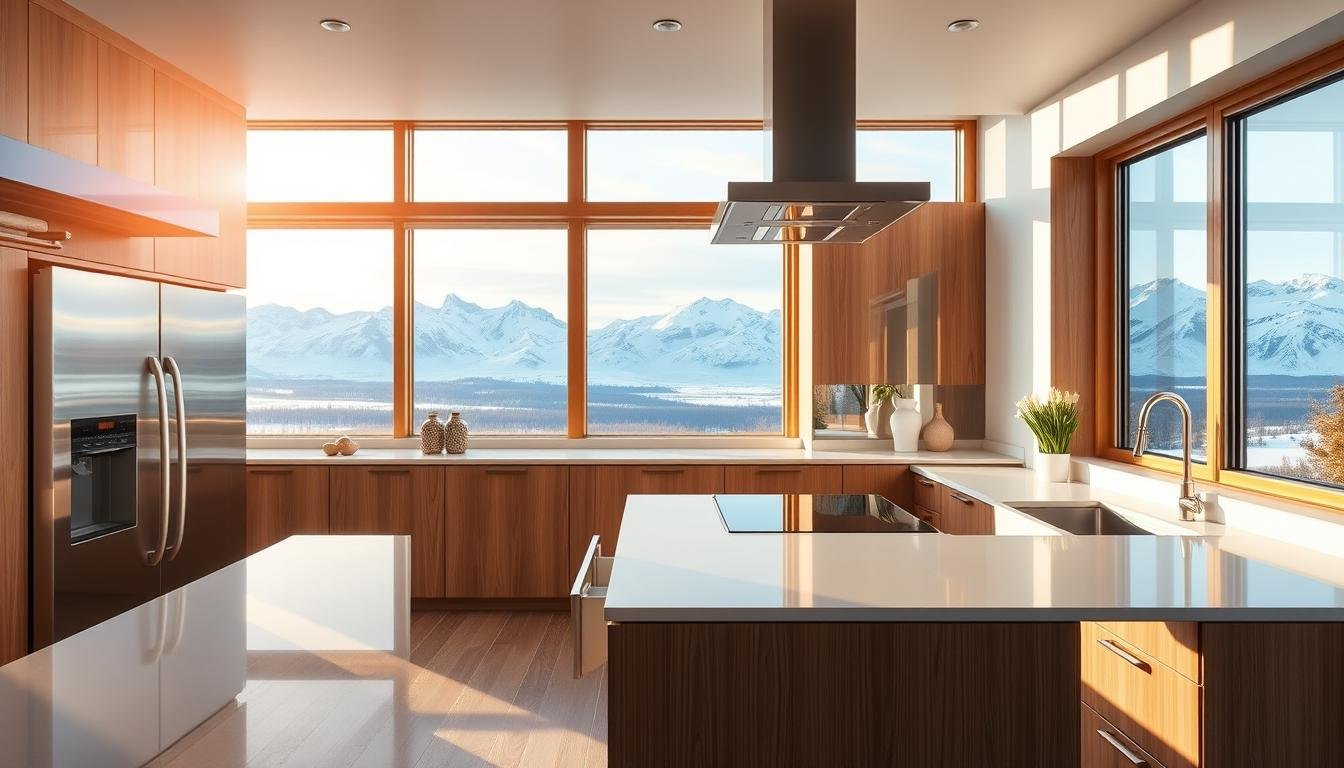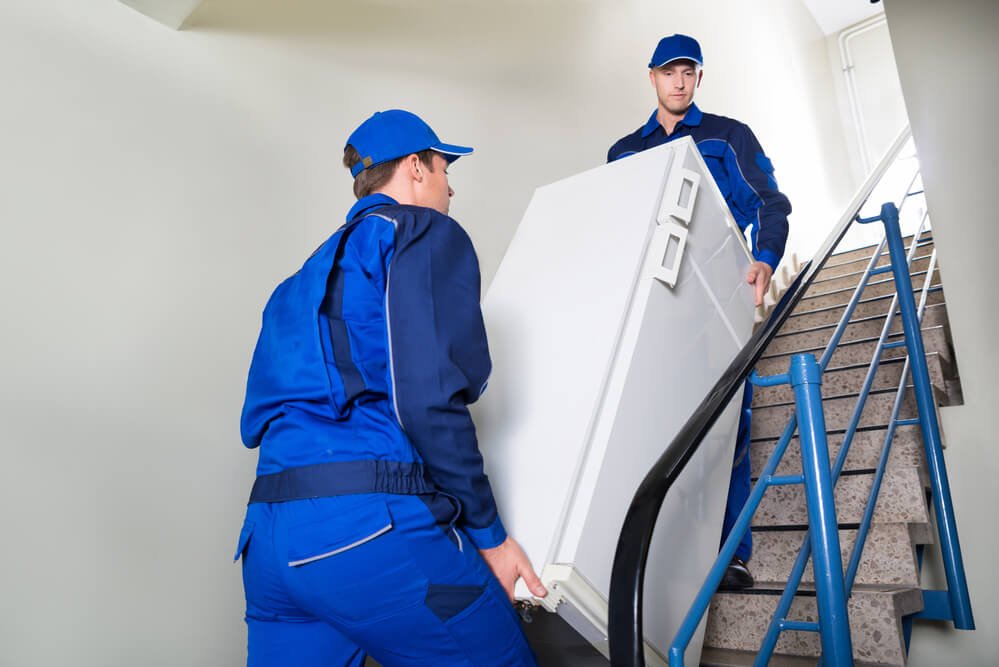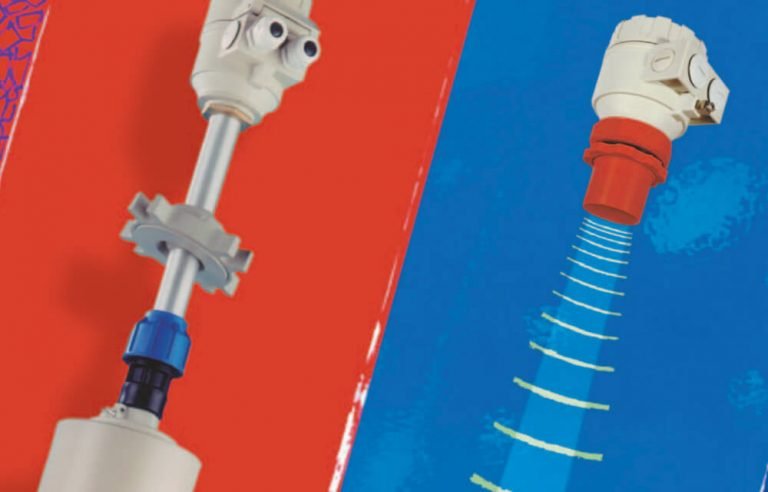Imagine this: You’ve just moved into a new home in Anchorage and notice your energy bills creeping higher each month. The kitchen, with its appliances, lighting, and constant activity, becomes a prime suspect.
In Anchorage, the average annual energy cost is $3,368—still high compared to other Alaskan regions, but there’s good news: smart choices can slash those numbers. Space heating dominates Alaska’s energy use, but kitchens play a big role too, with appliances alone accounting for 13-17% of total consumption.
Take LED lighting, for example. Replacing old bulbs with LEDs cuts energy use by 80%, and they last 25 times longer. Or consider your fridge: an ENERGY STAR® model could save 9-25% yearly. Every small change adds up. This guide shows how Anchorage kitchen renovations can transform your space into an energy-efficient hub—saving money and reducing waste. Let’s start by uncovering simple steps to turn your kitchen into a smart, cost-saving powerhouse.
Understanding Energy Efficiency in Your Kitchen
Energy efficiency in your kitchen starts with two key strategies: changing habits and upgrading tools. Small steps like turning off lights or using smarter appliances can cut costs and improve comfort. Let’s explore how to create a kitchen that works with Alaska’s climate, not against it.
Benefits of Energy Efficiency
- Lower bills: Upgrading to Energy Star appliances cuts energy use by 10–50%, saving money long-term.
- Healthier spaces: Better insulation and ventilation improve air quality, reducing allergens and moisture.
- Higher resale value: Buyers in Anchorage prioritize kitchens with eco-friendly features like LED lighting.
Common Energy Issues in Kitchens
Many Anchorage kitchens waste energy through:
- Poor insulation: Unsealed windows or walls let heat escape, worsening 73% of energy spent on heating.
- Old appliances: Refrigerators from before 2000 use 50% more energy than modern models.
- Inefficient lighting: Traditional bulbs waste 90% of energy as heat, raising cooling costs in summer.
Addressing these issues with environmentally friendly kitchen ideas like insulation upgrades or LED bulbs makes a big difference. Every choice in your remodel can turn your kitchen into a space that’s both cozy and kind to the planet.
Energy-Efficient Appliances for Your Anchorage Kitchen
Your kitchen’s appliances shape your energy use. Eco-friendly kitchen appliances and green kitchen upgrades can cut costs and reduce environmental impact. Start with Energy Star-rated products—they’re built to use 9–25% less energy than standard models. Over time, these choices save money and align with Alaska’s climate demands.
Choosing Energy Star Rated Products
Look for the Energy Star label when buying refrigerators, dishwashers, and ovens. These appliances meet strict efficiency standards. For example:
- Energy Star refrigerators use 15% less energy than non-certified models.
- Smart dishwashers adjust water and energy based on the load, saving water and money.
- Over 10 years, an Energy Star-rated fridge can save up to $1,000 in energy costs.
Idle Appliances: The Hidden Energy Consumers
Even when turned off, devices like coffee makers or blenders sip power. Vampire appliances waste up to 20% of your energy bill. To fix this:
- Unplug small devices when not in use or use smart power strips.
- Choose appliances with low standby power ratings—some models reduce idle energy use by 50%.
- Water heaters alone account for 10–16% of energy use. Regular maintenance boosts efficiency by 10–20%.
Pairing these choices with green kitchen upgrades like induction cooktops or LED lighting ensures long-term savings. Every upgrade lowers your home’s carbon footprint while keeping costs predictable in Anchorage’s climate.
Smart Technology Solutions for Kitchens
Smart technology turns your kitchen into a space that saves energy without sacrificing convenience. For Anchorage’s climate, tools like smart thermostats and automated systems make the energy efficient kitchen a reality while supporting sustainable kitchen design. Let’s explore how.
Start with a smart thermostat. These devices learn your routines and adjust heating automatically. Imagine coming home to a warm kitchen without wasting energy all day. Lowering the thermostat just 5 degrees can save 10% on heating bills. Models like Nest or Ecobee integrate with other systems, optimizing comfort and costs.
- Program settings to reduce heat when you’re away, saving up to $150 yearly.
- Remote control via app ensures no energy is wasted when you’re not there.
Next, automate lighting. Switch to LED bulbs first—they use 80% less energy than old incandescent. Pair them with motion sensors or timers so lights only turn on when needed. A 75W incandescent vs. a 10W LED for the same brightness? The math adds up fast.
- Install sensors in pantries or walk-in pantries to avoid leaving lights on.
- Dimmable smart bulbs adjust brightness based on natural light levels.
Track usage with real-time monitors. Plug appliances into smart outlets to see their energy draw. Apps like Sense or Kill A Watt show exactly where savings can happen. Seeing data often cuts usage by 5-15% just through awareness.
- Spot energy hogs like old refrigerators or overused ovens.
- Set alerts when usage spikes to catch leaks or inefficiencies.
These tools aren’t just gadgets—they’re the foundation of a smarter, greener kitchen. Small steps add up, making your space both high-tech and eco-conscious.
Sustainable Practices and Materials
Completing your Anchorage kitchen renovations with sustainable kitchen design ensures your space stays eco-friendly long-term. Every choice from lighting to materials can reduce your environmental impact while lowering bills. Here’s how to wrap it all together:
Lighting That Cuts Costs and Waste
Swap traditional bulbs for LEDs—they use 80% less energy than incandescent lights. For example, under-cabinet LEDs focus light where you need it, saving energy without sacrificing brightness. Dimmable overhead fixtures let you adjust light levels, cutting unnecessary use.
Materials That Protect the Planet
Pick green kitchen upgrades like recycled glass countertops or FSC-certified wood. These options cut down on waste and emissions. Cork flooring adds natural insulation against Anchorage’s cold, while low-VOC finishes keep air clean. Even small details, like using locally sourced materials, reduce transportation-related carbon footprints.
Water-Saving Tips That Add Up
Lower your water heater to 120°F—this simple step saves 6-10% on energy, per the Department of Energy. Install aerators on faucets to cut flow without losing pressure. Look for dishwashers with water-saving modes. Plus, Anchorage residents can explore programs like weatherization assistance to offset costs if eligible.



